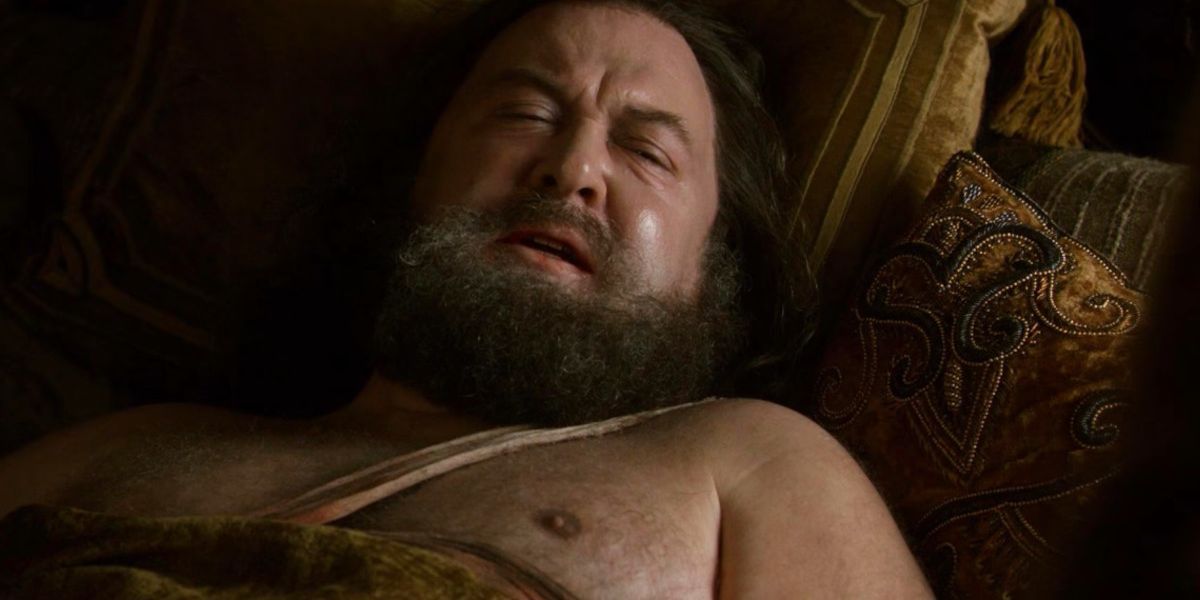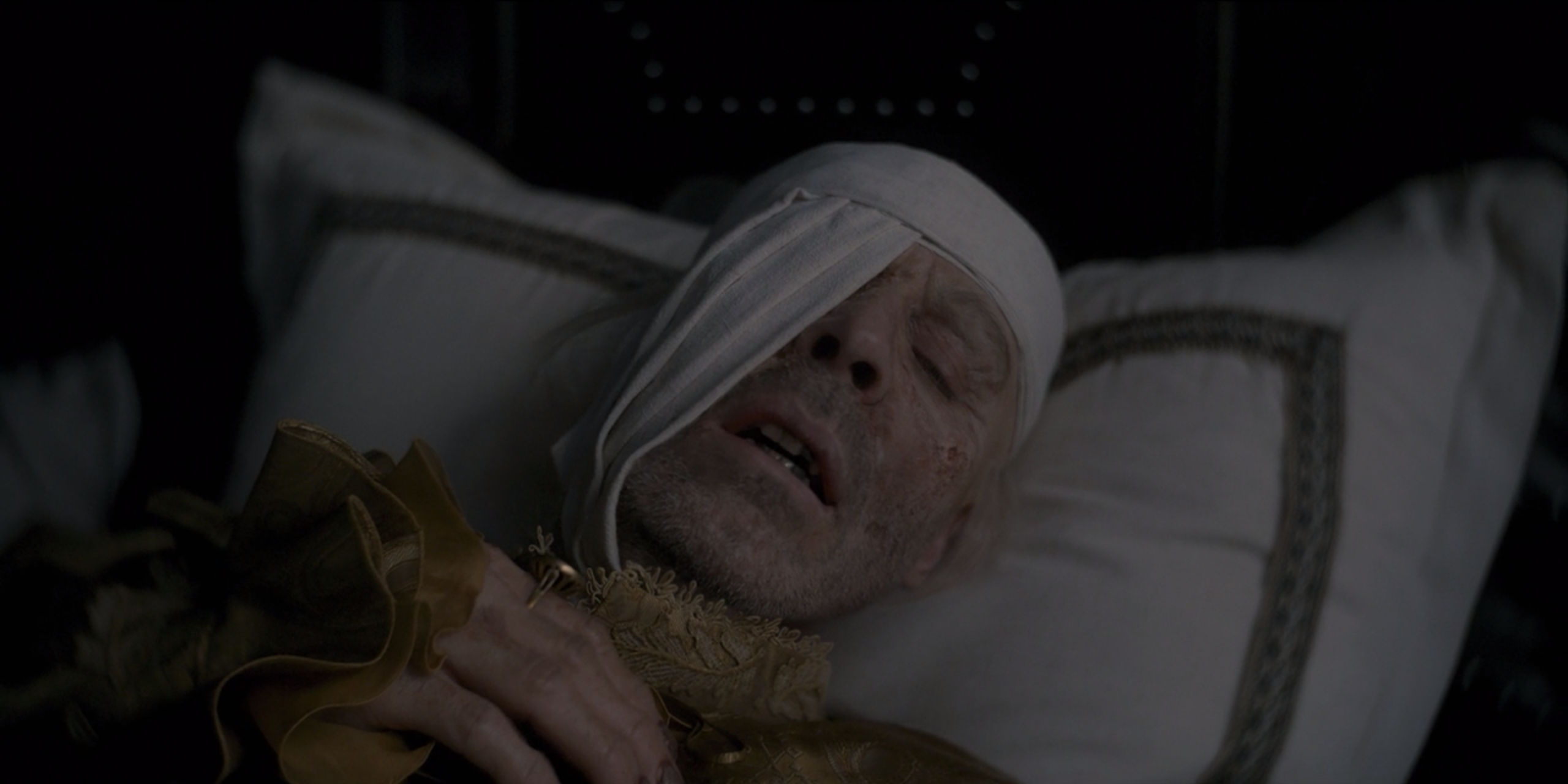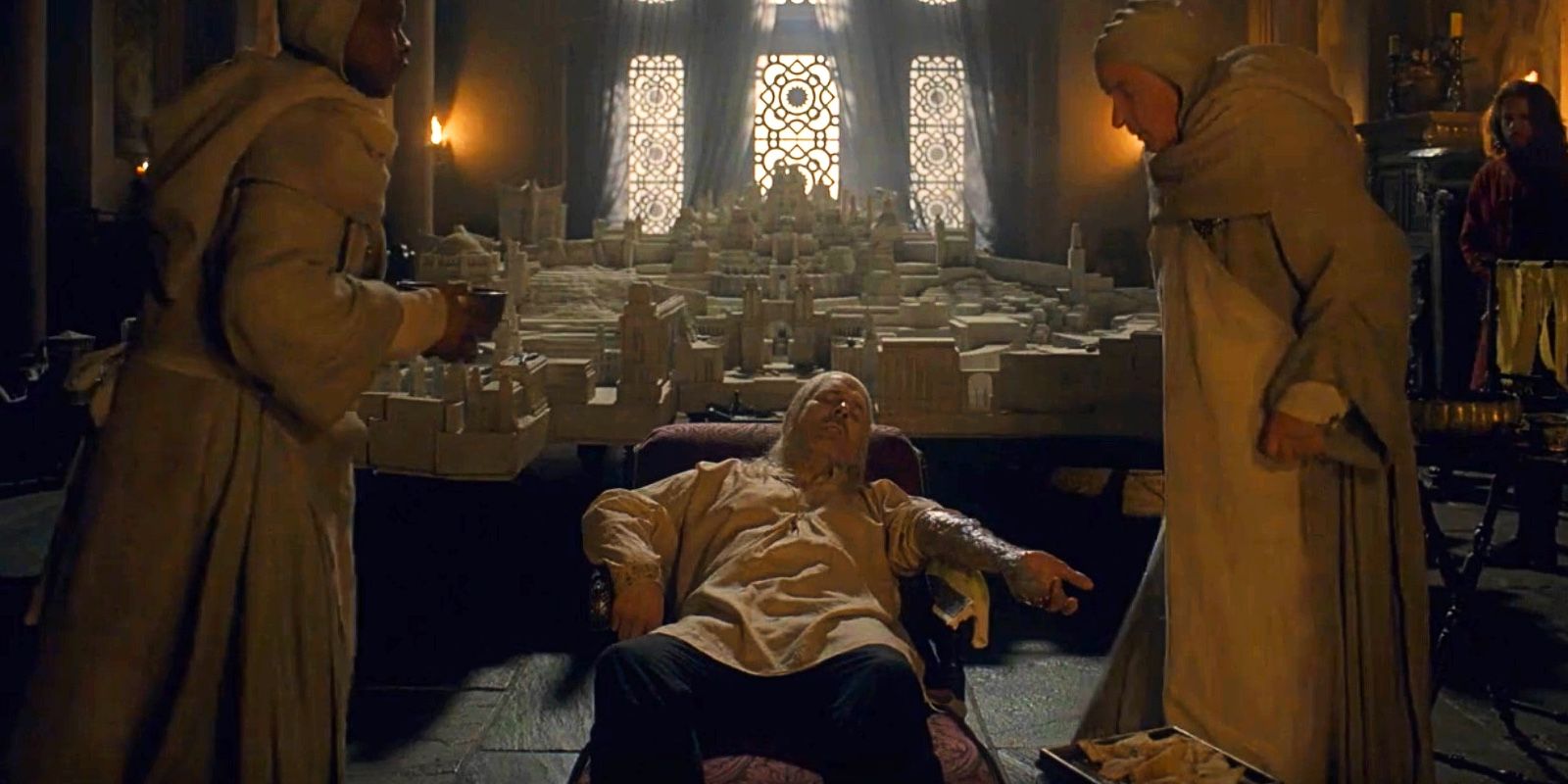10 Bizarre But Real Medieval Medical Practices, Including Maggots
Viserys I Targaryen, played by Paddy Considine in House of the Dragon, died in the first season’s antepenultimate episode. The cause of Viserys’ death is not explicitly stated, but his rapid physical deterioration over the years was gruesome.
So were his treatments. Nearly every episode showed the maesters tending to the king as they tried a variety of medieval medical cures to heal him. The primitive nature of these medical practices seem outlandish, but they’re rooted in real-world history. Medicine has come a long way since the medieval period. Some treatments were actually beneficial while others were completely useless, but they were all strange.
10/10 Milk Of The Poppy
Milk of the poppy is a well-known substance to any fans of either Fire & Blood or Game of Thrones, in which the elixir makes frequent appearances. Viserys, along with a number of sick characters, take the medicine to dull pain.
The description of the milk of the poppy makes it sound like the plant is the very same one found in the real world. Poppy extract is well known for its numbing properties and is the essential ingredient in opium. According to Men’s Health, this medicine was used frequently in world history as a primitive anesthetic.
9/10 Cauterization Of Wounds
The scenes of cauterization in the world of A Song of Ice and Fire are always particularly painful to watch. In Game of Thrones, Jaime has boiling wine poured over his mutilated limb. In House of the Dragon, during his painful deterioration, Viserys requests cauterization despite the painfulness of the procedure.
According to British Library, this procedure was seen often in the medieval period, particularly as a battlefield treatment when time was of the essence. It generally involved a heated piece of metal or liquid placed on an open wound to seal it. This was excellent to stop bleeding and kill infection but was extremely painful in return.
8/10 Live Snails
While snails have not been shown in either House of the Dragon or Game of Thrones for medical purposes, there are sure to be some in Helaena Targaryen’s bug collection. And these critters could very well be used for medical procedures just like they were in the past.
Snail slime was at one time, and according to Hypotheses still is, used as a salve for burns. The live snails would be rubbed over the injured area to help recovery. For a family so closely intertwined with fire and dragons, the Targaryens could certainly have had snails on hand for the purpose.
7/10 Trepanation
One of the world’s oldest forms of surgery feels like it could be something developed in the darkest corners of Asshai. The primitive surgery involved drilling holes into the skull in order to cure sickness or relieve pain, according to Medical News Today. It has some logic to it, if there is pressure in the head, one can make a hole to relieve the pressure.
Skulls have been found with evidence of multiple trepanation procedures indicating that it was possible to survive the surgery. Multiple cultures developed the practice analogously so while the practice seems barbaric and strange, it was the norm for a long time.
6/10 Bloodletting
In George R. R. Martin’s Song of Ice and Fire novels, bad blood can refer both to having the wrong familial ties and the more common medical ailment. In the Medieval period, doctors believed that the cause of many illnesses and diseases “was bad blood”, according to History.
To heal those with tainted blood, bloodletting was developed. The procedure was performed just as the name describes. The patient’s body was cut into with supervision from a doctor and the blood was drained from the body in the hopes the illnesses would be drained as well.
5/10 Maggots
At the beginning of House of the Dragon, Viserys is already suffering from whatever disease it is that ends up killing. And each successive episode, his deterioration becomes more gruesome. Eventually, he even begins to lose body parts, the first to go are his fingers that rot and fall away.
The maester’s solution to this problem is to place Viserys’ hand in a bowl of maggots so that the larva will eat the dead flesh. This is taken straight from history. According to Live Science, the medical practice has been around since antiquity, and its success is well-documented enough that is still occasionally used in biotherapy.
4/10 Saffron
Fans of the book The World of Ice and Fire may have noticed that in the section on Yi Ti, one of the foreign empire’s exports is saffron. Saffron was used in medieval times as a medicine, so the exported goods could very well be put to similar use in Westeros.
According to National Library of Medicine, the spice derived from the flower was used as a cure for drunkenness and depression. Both illnesses that affect many of the royals of Westeros. Doctors from the time period warned to not consume too much, however, as it could lead to death from excessive joy.
3/10 Mercury
In one of the strangest bits of ancient medicine, people used to be prescribed mercury as a way to cure any number of diseases. According to the National Library of Medicine, in medieval times, mercury was used to treat people with syphilis, a deadly but common sexually transmitted disease.
While the metal appeared to be successful at curing syphilis, the patients would generally die from complications brought on by the medicine itself. Mercury is now well-understood to be toxic, and its application as a cure for centuries is baffling.
2/10 Leeches
Leeches are a favorite medical application of the maesters in King’s Landing. The arch-maesters have a complicated relationship with King Viserys and prescribe the application multiple times in an unsuccessful attempt to cure the king of his rotting disease. But they don’t seem to be very effective as the king continues rotting.
This treatment has been around for ages and is still often used in modern hospitals for the purposes of stimulating blood flow during reconstructive surgery, according to Live Science. The medieval variation was not as successful because doctors mainly used it as a way to “suck-out” the disease, which was rarely effective.
1/10 Cannibal Cures
Cannibalism is a significant part of The World of Ice and Fire. Consumption of human flesh is a part of the Northern magic system that revolves around the old gods. There is a fan theory that Bran consumed the blood or flesh of his companion Jojen to finally open his third eye, and the Thenns are well known for their cannibalistic tendencies.
Even this savage practice has its roots in real medieval medicine. According to the Smithsonian, there was a time when it was thought that consuming the flesh, bones, and blood of the deceased could heal ailments as minor as headaches. Powdered bones of mummies were popular and concoctions made with alcohol and crushed bones were ways the wealthy lords tried to stay healthy.














